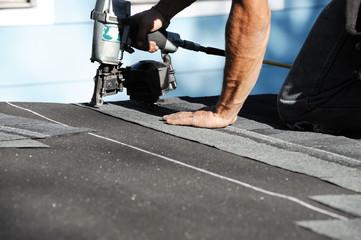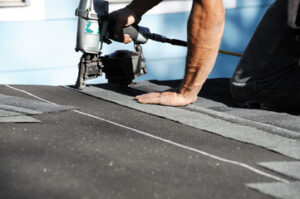
Jeeps are popular with off-road enthusiasts who want a tough, versatile ride. They can also be outfitted with accessories that improve functionality, comfort, and style.
A Jeep battery gets a lot of attention, and rightly so: without it, your Jeep would be worthless. Another essential Jeep Parts are the alternator, which converts mechanical energy into electrical energy to keep your car running.
The Jeep is a versatile vehicle with an excellent reputation for off-road driving. It has a rugged body frame that makes it easy to drive over rough terrain. It has four-wheel drive capabilities, which means it can handle a lot of power. It also has a lot of accessories that can improve its performance. It’s one of the best-selling vehicles on the market today, and it has a lot to offer its owners.
Jeep is a company that’s a little different from most other car manufacturers. While most companies design their cars for all kinds of purposes, Jeep is all about off-road vehicles and SUVs. This has made them a name to trust when it comes to quality and reliability.
It’s not uncommon for Jeep owners to modify their cars in order to make them look and perform better. Some of these modifications are necessary, while others are just a way to express their individuality. A common modification is a set of wheels. A new set of wheels can give a Jeep an instant facelift, and there are many options to choose from. There are even jeep wheels that can provide extra traction, which is ideal for off-roading.
Throughout the years, Jeep has evolved from its humble beginnings to become one of the most recognizable names in automotive history. The brand’s legacy of legendary capability and craftsmanship continues to inspire people around the world to take on extraordinary journeys. Its broad portfolio of authentic SUVs includes the Cherokee, Compass, Renegade, Grand Cherokee, and Gladiator.
The first jeeps were developed for the Army during World War II. The original model, the CJ-2A, was designed by American Bantam. It was later replaced by the Ford GPW, which had more advanced features. Nevertheless, the jeep retained its iconic seven-slot grille design.
Jeep enthusiasts love to customize their vehicles to match their personalities and preferences. Some of the most popular upgrades include a winch and rock sliders. A winch is a powerful device that can pull the vehicle out of difficult situations, such as deep mud or sand. It’s essential for self-recovery during off-road excursions. Rock sliders are heavy-duty bars or panels that protect the sides of a jeep from rocks, stumps, and other obstacles.
Interior
Whether you’re an experienced Jeep owner or just starting out, venturing into the world of modifications and upgrades can be exhilarating, but also intimidating. With so much terminology to learn, it can be difficult to know where to begin. Fortunately, the team at Hellwig Suspension Products is here to help!
Our comprehensive Jeep Parts Glossary provides a clear definition of key Jeep-related terms. From suspension systems to body armor, this glossary can help you understand the parts and accessories you need for your next off-road adventure.
Jeep is a division of Chrysler that designs SUVs and off-road vehicles. The company’s motto is “Go Anywhere, Do Anything,” which speaks to the brand’s history of off-roading and rough terrain driving. However, Jeeps aren’t immune to the same types of issues that affect other vehicles. Luckily, the company’s sturdy design and accompanying capabilities make them incredibly durable, but even these vehicles need to be serviced from time to time.
For instance, if you want your jeep to be more comfortable during hot weather, you’ll need a functioning air conditioning system. The compressor is the heart of the air conditioning system, as it’s responsible for sending refrigerant throughout a closed loop in the vehicle. The refrigerant absorbs heat from the accumulated air and then circulates it through the evaporator, where it’s cooled. Cool air is then pumped into the cabin.
The Army originally wanted a light, four-wheel drive vehicle for use around camps and for travel between bases. They originally asked American Bantam to build a prototype, but the company was too small to produce the quantity required and so Ford and Willys-Overland designed their own versions based on Bantam’s design. The Army ultimately selected the Willys-Overland version because it had more reliable engines and a more practical layout. They dubbed the new model GPW, referring to it as a General Purpose Vehicle (GP) and giving it the name that’s still in use today. (It wasn’t an acronym, as some have suggested, but simply a reference to its purpose.) The GPW was so popular that it became the main military truck of World War II.
Performance
One of the great things about jeeps is that they can be customized to suit your specific needs. Many jeeps are equipped with a wide variety of suspension upgrades, lighting upgrades and interior accessories that can enhance the performance and style of the vehicle. These modifications can improve the handling of your jeep and also make it look much more aggressive. They can also increase the overall value of the vehicle.
The Jeep has a long history in the United States and was one of the first off-road vehicles used by the military. It has since been supplanted by a number of vehicles, including the Ford MUTT and the Humvee, but it remains a popular option for people who want to go off-road in style. Jeeps are built to handle a variety of terrain and can be modified with various accessories to make them more versatile and useful for off-road driving.
Some of the most popular Jeep accessories are those that can increase horsepower. They accomplish this by increasing the airflow to the engine, allowing it to run cooler and provide more power than the stock version. These upgrades can also reduce the strain on your engine and prevent it from overheating. A faulty differential can cause your Jeep to drift on the road or spin out of control, and replacing it with a high-quality upgrade is an easy way to correct this problem.
Jeeps are designed to be durable and reliable, but they can still break down from time to time. The high-revving crawls that are typical of off-road trails stress the engine and cooling systems, so it’s important to have parts on hand that can replace them if necessary. A Jeep radiator can help keep the coolant at the right temperature, which can prevent overheating.
While many Jeep owners love to customize their vehicles, it’s important to remember that this can be a costly endeavor if done incorrectly. It’s essential to find a qualified mechanic to ensure that your Jeep is in good shape and can meet all of its performance requirements. With the right care, you can enjoy your Jeep for years to come.
Off-Road
The reason many Jeep owners drive these vehicles is because they want to take their cars on off-road trails and rocky paths. They want to be able to explore the mountains, forests and sandy deserts that surround us here in Colorado. Unlike other off-road vehicles, such as side-by-sides, Jeeps are built to handle rough terrain with ease. They have been honed by the manufacturer over 80 years to deliver world-class off-road capability. They have 4-wheel drive, high ground clearance and skid plates. Their crawl ratios also allow them to maintain traction on slippery surfaces.
But, like anything in life, there are always obstacles that can arise on your off-road journeys. One of the most common problems that can befall you is getting stuck in mud, sand, or snow. To prevent this, you should always come prepared with a winch. This will help pull you out of a jam without any damage to your vehicle. There are several different options on the market, but some of the top rated brands include WARN, Superwinch, and Smittybuilt.
You should also make sure your Jeep has sufficient ground clearance, which is easy to do by adding a lift kit. These kits raise the body of your jeep one to three inches to give it more clearance. The kit will also let you add bigger tires, giving you the ability to navigate even more challenging terrains.
Another thing you should do before heading off-road is to inspect your Jeep for any damages or wear and tear. This will give you a better idea of what kind of maintenance it needs and when. You can also bring your Jeep to a mechanic for a quick service so it is in tip-top shape for your off-road adventures.
While off-roading can be dangerous and cause damage to your vehicle, it is a lot of fun. If you follow the tips above, you should have no problem enjoying your next off-road adventure with your trusty Jeep. And if your Jeep ever gets damaged while you are off-roading, bring it to the experts at Kendall Dodge Chrysler Jeep Ram in Miami. They will be happy to repair your vehicle and get it back in great shape for you to enjoy again!

 Trim Tree Branches
Trim Tree Branches